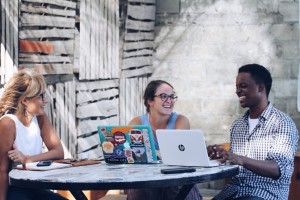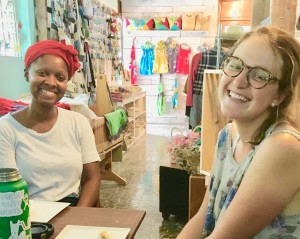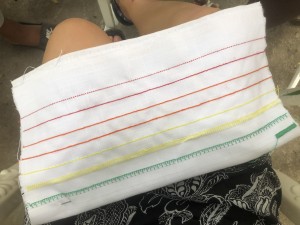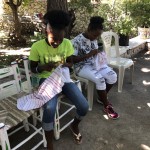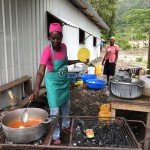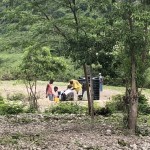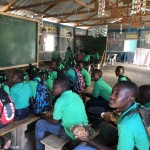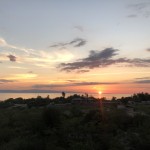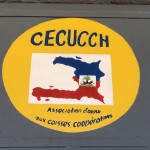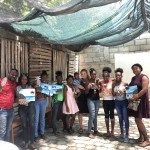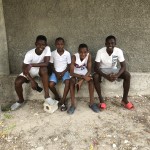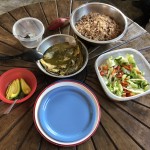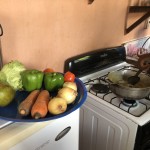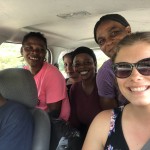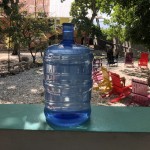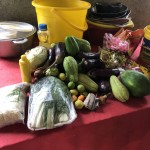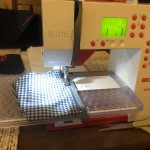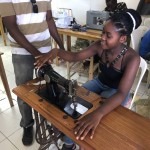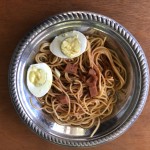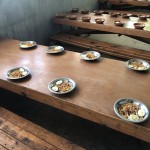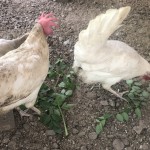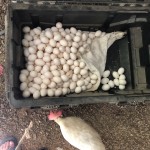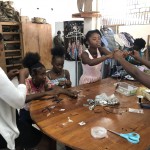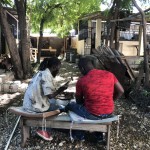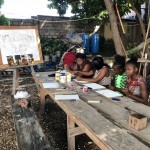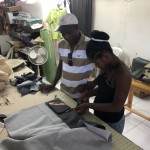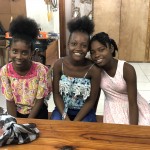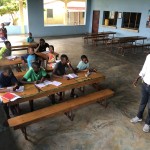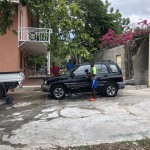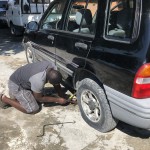This week I spent my time in the Emergency Department. The most common incident would be a motor vehicle accident, and the second most common was physical assault.
Here are some patients I saw through out the week in the ER:
- Motor Vehicle Case: The patient had fallen off a motor vehicle and shattered every bone in his face. His whole face was swollen and black and blue. He could barely open his left eye and his right eye was completely swollen shut. They did a CT scan and an X-ray of his back, his brain had no damage and he had not damage to his spine, which is honestly amazing. He would receive surgery in the next few days.
- Physical assault case: physical assault cases are very common especially during festival season. According to one of the doctors I spoke with, many people drink during the festival season especially men and they tend to get in fights and end up in the hospital. This patient was hit over the head multiple times with a plank of wood. The patient had two huge lacerations and two lacerations on his back. One of the doctors stitched the two lacerations on his head with very little stitching, there were areas that were still open. I would have thought they would have stapled it, but I guess they do not have the money to staple. It surprised how few sutures they did, what I would have thought required around 10 maybe more they used six.
- Drugged Addiction: this patient came in after realizing his injection site in his lower thigh region started to have pus discharge. This patient had been injecting drugs for 20-25 days, and the discharge has been the most past 20days. It took a while for the nurses to get IV access, at least three of four tries
- Cardiac patients: two cardiac patients came in around the same time. One patient was in hypertension crisis. The patient sat around for a while with no treatment taking place because the family had not paid yet, they were waiting in line to pay. Once the family paid the patient went for an angiogram and PCI. The patient had had a anterior wall MI about 4-5 hours ago. On his monitor you could clearly see ST elevation. The other patient was in SVT and transferred to the CCU, after being give amiodarone.
- On Wednesday I walked into the ER as a nurse was walking from the ambulance area through the ER to GYNO/OB carrying a baby. I went to the ambulance dock and saw that a mother had given birth to the baby in the ambulance. After a little while, I left the ER to go check on the mother and baby, the mother was being cleaned and stitched, and the baby was healthy sitting under a heating lamp.
- On Thursday there were two chronic alcohol patients: one patient had a seizure disorder from the alcohol. The other patient was having tremors, auditory hallucinations, and was tachycardic.
On Friday, two other volunteers and I worked night shift in the ER. The beginning of the night was quite busy. There were many patients with motor vehicle accident, a patient with appendicitis, a patient with gallstones, many patients in the observation ward, and some physical assaults. Around 10pm is when the night started to get busy. There were three motor vehicle cases and a very very drunk patient. The first motor vehicle case the patient was riding a bike and got hit by what is similar to our garbage trucks. His fibula, tibia, some ankle bones, and many foot bones were all broken. The patient was placed in a almost full leg cast and would hang out in he ER until surgery the next day or even the day after. Another motor vehicle case was a older patient who was intoxicated and got in an accident. He had a broken arm and was also placed in a cast until surgery the next day or even the following day. The drunk patient was very aggressive and almost fell out of her bed multiple times. Her family had to keep her in bed with all their strength to prevent her from falling out of bed. Her family also believed that she might have taken drugs as well. After around 2am it was very very slow until our shift was over. Working a night shift here really let me see what evenings are like in Chitwan. We don’t really leave the house after dark, so it was interesting riding to work in the dark and seeing how busy the streets were.
A normal routine for a patient. The patient will arrive via ambulance or walk into the ER. The patient will then be placed in a bed, and assessed. After the assessment is complete the family then takes the orders to the billing counter and the patient’s family pays for all the treatment that will occur, which could take anywhere from 10mins to over an hour depending on ow busy the ER is. The family then comes back with the statement saying they paid and the nurses and doctors begin treating the patients. If the patient needs stitches there is a procedure room where the patient will receive stitches, where yet again the family has to go out of the hospital to the pharmacy to get the sutures, and any other supplies that might be needed. The patient is then stitched up and moved back to the ER area. There is a yellow zone, a red zone, and an observation ward. The yellow zone is less critical than red, and the observation ward is after the patient becomes stable but still needs to be observed before discharge. Once the patient is stabilized he/she will be either transferred to a floor or moved to the observation ward, from the observation ward the patient may go see doctors in the out patient department if the patient is not critical enough to be admitted, but needs to see a specific doctor. If the patient does not need to see a specific doctor then the patient will be discharged from the observation ward. Most of the patients in the emergency room are not super critical and the critical ones get stabilized and transferred to an ICU floor.
Observations made:
- Alcohol addiction, drinking and driving, and motor vehicles are a problem
- Motor vehicle accidents (bikes, motorbikes, and tuktuks) are common and road rules, stop signs, stop lights, or any traffic controls are nonexistent
- Many patients have back flow of blood into their IV lines, patients will randomly disconnect their IVs lines themselves even while medicine is running.
- Physical assaults are very common, often times I thought that accidents were occurring like running into something or something falling while working because there were so many physical assaults I didn’t think it was possible to have that many but nope people really get into fights here.
- They don’t run toxicology reports for alcohol or to figure out what drugs patients took, they only have access to be able to test certain drugs, but it has to be with in a certain time of consumption.
- On night shift there are no surgeries except emergency surgeries which include gallbladder removal, appendix removal, or c-sections. Most night shift surgeries that occur are c-sections.




































